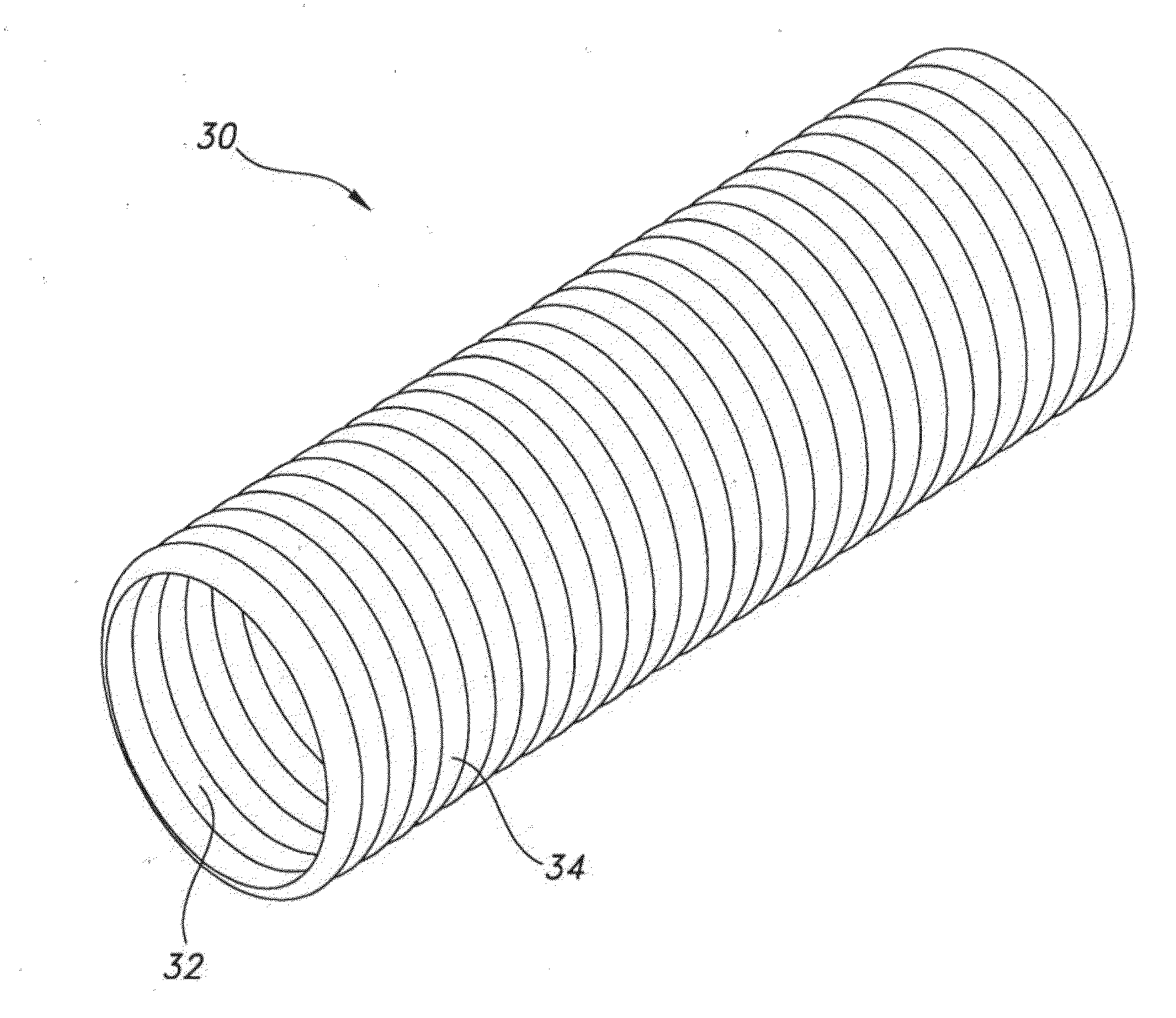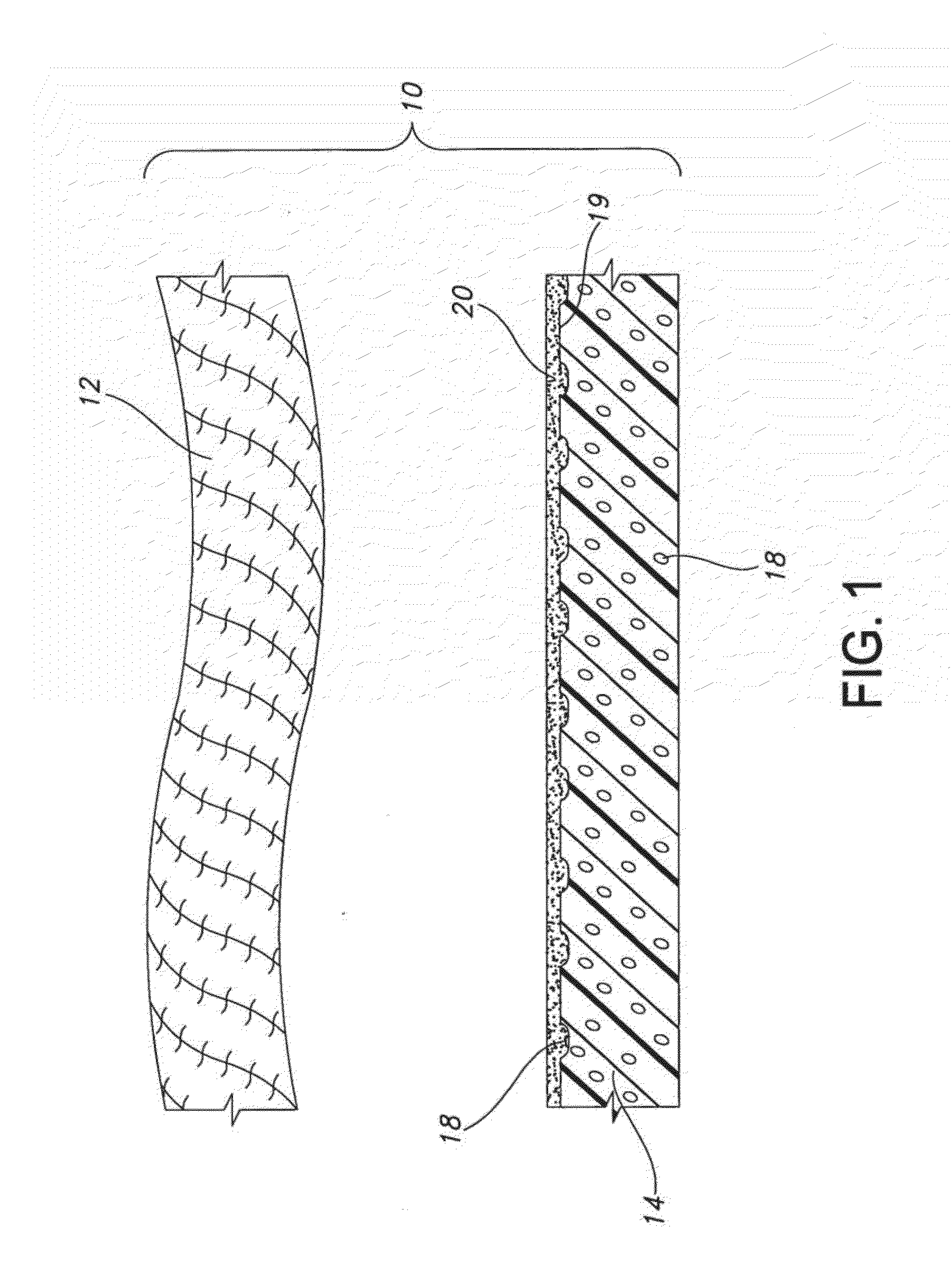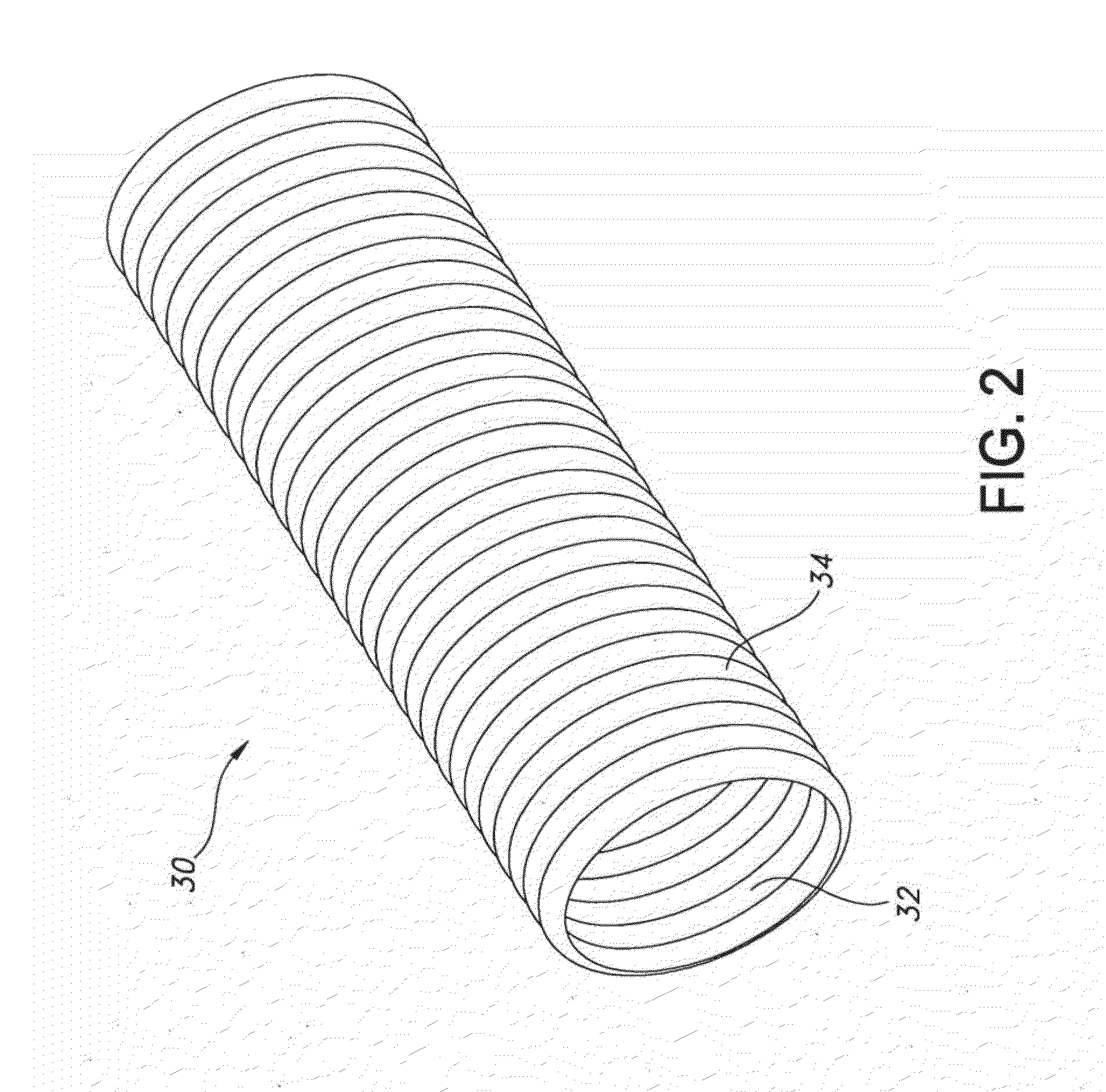Composite ePTFE/Textile Prosthesis
a technology of textile prosthesis and composite material, which is applied in the direction of prosthesis, pedestrian/occupant safety arrangement, prosthesis, etc., can solve the problems of increasing the thickness of the tubular structure, affecting the implantation process, so as to improve the ingrowth of tissue, reduce the thickness of the textile layer, and improve the effect of tissue ingrowth
- Summary
- Abstract
- Description
- Claims
- Application Information
AI Technical Summary
Benefits of technology
Problems solved by technology
Method used
Image
Examples
Embodiment Construction
[0027]The present invention provides a composite implantable prosthesis, desirably a vascular prosthesis including a layer of ePTFE and a layer of a textile material which are secured together by an elastomeric bonding agent. The vascular prosthesis of the present invention may include a ePTFE-lined textile vascular graft, an ePTFE vascular graft including a textile covering and a composite ePTFE / textile vascular patch.
[0028]Referring to FIG. 1, a schematic cross-section of a portion of a representative vascular prosthesis 10 is shown. As noted above, the prosthesis 10 may be a portion of a graft, patch or any other implantable structure.
[0029]The prosthesis 10 includes a first layer 12 which is formed of a textile material. The textile material 12 of the present invention may be formed from synthetic yarns that may be flat, shaped, twisted, textured, pre-shrunk or un-shrunk. Preferably, the yarns are made from thermoplastic materials including, but not limited to, polyesters, polyp...
PUM
| Property | Measurement | Unit |
|---|---|---|
| structure | aaaaa | aaaaa |
| porosity | aaaaa | aaaaa |
| thickness | aaaaa | aaaaa |
Abstract
Description
Claims
Application Information
 Login to View More
Login to View More - R&D
- Intellectual Property
- Life Sciences
- Materials
- Tech Scout
- Unparalleled Data Quality
- Higher Quality Content
- 60% Fewer Hallucinations
Browse by: Latest US Patents, China's latest patents, Technical Efficacy Thesaurus, Application Domain, Technology Topic, Popular Technical Reports.
© 2025 PatSnap. All rights reserved.Legal|Privacy policy|Modern Slavery Act Transparency Statement|Sitemap|About US| Contact US: help@patsnap.com



